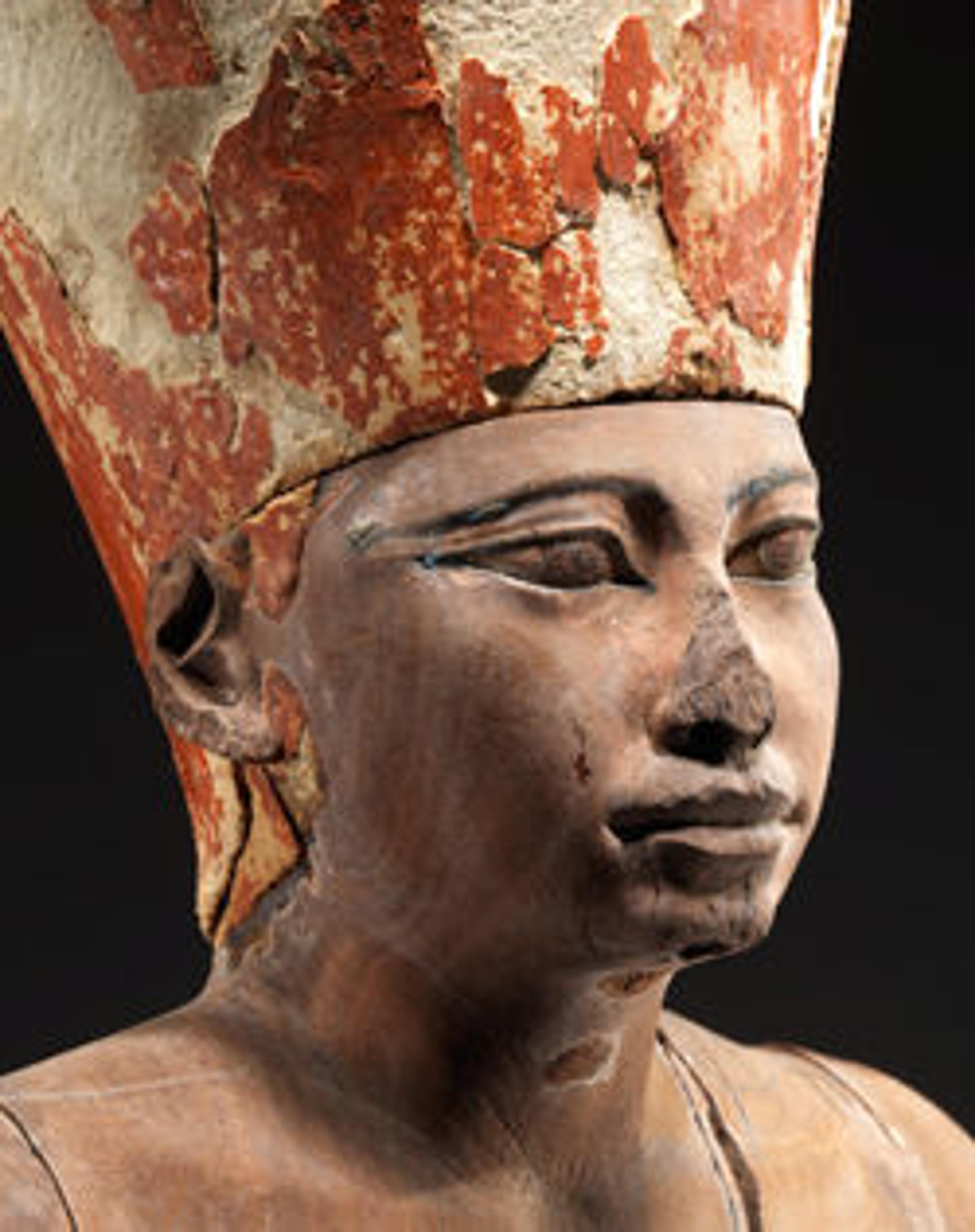Feeding Cup
This little cup of faience was not found in a tomb, but was nestled together with the figure of a crocodile (07.227.19) in a small basket deposited by itself in the ground among the tombs to the west of the pyramid of Amenemhat I at Lisht North. The person who made this deposit could have lived in one of the houses that had been built over the tombs in the cemetery on the south and west of the pyramid.
The shape of the cup permits milk to be fed to a baby. The cup is appropriately decorated with the beneficial deities and demons otherwise found on so-called "magic wands," thought to have served for the magical protection of infants (see 86.1.91). On this cup appear a walking lion, an upright standing lion, a long-necked mythical animal, a snake, and a turtle.
The shape of the cup permits milk to be fed to a baby. The cup is appropriately decorated with the beneficial deities and demons otherwise found on so-called "magic wands," thought to have served for the magical protection of infants (see 86.1.91). On this cup appear a walking lion, an upright standing lion, a long-necked mythical animal, a snake, and a turtle.
Artwork Details
- Title: Feeding Cup
- Period: Late Middle Kingdom
- Dynasty: Dynasty 12, late –13
- Date: ca. 1850–1700 B.C.
- Geography: From Egypt, Memphite Region, Lisht North, cemetery south-west of pyramid, "toilet basket II," deposited without burial, MMA excavations, 1906–07
- Medium: Blue faience, paint
- Dimensions: H. 3.5 cm (1 3/8 in.); W. 8 cm (3 1/8 in.); D. 4 cm (1 9/16 in.)
- Credit Line: Rogers Fund, 1944
- Object Number: 44.4.4
- Curatorial Department: Egyptian Art
More Artwork
Research Resources
The Met provides unparalleled resources for research and welcomes an international community of students and scholars. The Met's Open Access API is where creators and researchers can connect to the The Met collection. Open Access data and public domain images are available for unrestricted commercial and noncommercial use without permission or fee.
To request images under copyright and other restrictions, please use this Image Request form.
Feedback
We continue to research and examine historical and cultural context for objects in The Met collection. If you have comments or questions about this object record, please contact us using the form below. The Museum looks forward to receiving your comments.
